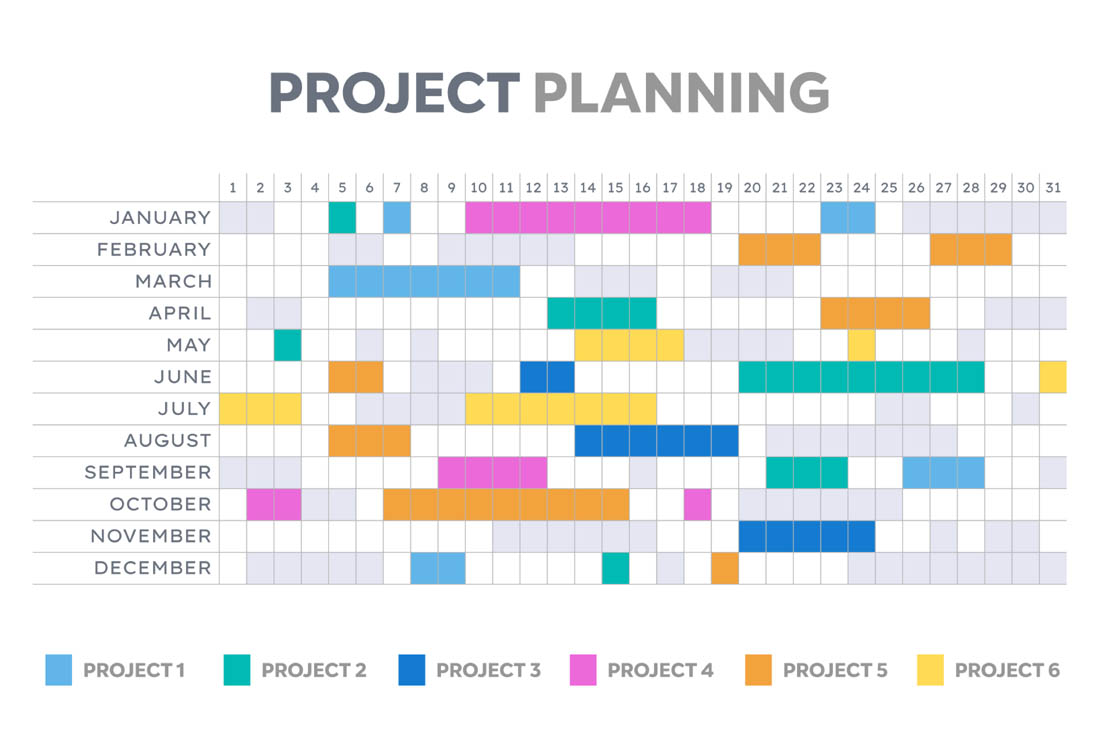Every organization strives to ensure its resources are used efficiently. Companies should make sure that team members are productive, time is used efficiently and the company focuses on the right priorities. Not only to deliver high-quality products and services but also to cut costs and plan for the organization’s long-term health.
Any successful business must manage its resource capacity to ensure resources are used effectively to meet strategic goals. Planning, monitoring and adjusting employee capabilities, time, technology and physical resources are all important aspects of capacity management. Simply put: Companies with capacity management have the right resources at the right time to deliver products or services effectively.
Learn more about capacity management and six tips to implement a capacity management program within your organization.
What is capacity management?
Capacity management is optimizes resources to meet current and future business requirements. This is important to maintain operational efficiency, improve customer satisfaction and drive business growth. By effectively managing capacity across the organization, your company will avoid bottlenecks, delays and overusing resources, which leads to lower costs and increased productivity.
Capacity management isn’t a one-and-done task. Successful organizations implement an ongoing process with careful planning and execution. While every organization is different, basic capacity management requires analyzing historical data, market trends and business forecasts to make informed decisions about where to put resources to work. By proactively managing capacity, your organization will adapt to changing market conditions and stay ahead of the competition.
Examples of capacity management
It’s become cliché to say that a business’s most important asset is its people, but when it comes to capacity management, people and their abilities are at the top of the list. Companies need enough staff with the right skills to work efficiently and effectively and meet company objectives. Beyond employee productivity and its effect on profitability, employee well-being is also at risk when a company doesn’t effectively manage resource utilization.
Here are three examples of when capacity management becomes important.
- Low headcount: When there isn’t enough staff to complete the work necessary to keep up with productivity and output expectations, quality will suffer and staff will face burnout. The tech sector is facing pressure to cut costs as the economy has shrunk due to inflation and other issues. Layoffs are increasingly common as tech companies try to rein in spending. Many of these tech companies will face problems with employee and customer retention if they can’t allocate resources effectively.
- Not enough work: Full-time, salaried employees are usually paid for eight work hours regardless of how much time they spend on company projects. If the company has a slow period or changes its focus, some of these full-time employees may not have enough work to do. The company will be paying for time that isn’t productive and the employees may become bored and unfulfilled in their jobs.
- Underskilled staff: Employees need to be trained to do their work effectively. If a company introduces a new product or service to its customers but employees don’t know how to deliver it, the company suffers from poor quality and reduced profits. New tools or technology can also impede employees’ ability to work if they don’t know how to use them. When businesses make these changes, they need a capacity management strategy that provides enough time and training to ensure employees are properly equipped to handle the adjustments.
Benefits of capacity management
While capacity management may seem like a chore, it offers many benefits that should make businesses eager to invest in the process, including:
- Improved workforce management: When leadership understands the capabilities of their workforce, they’re empowered to hire and promote employees more strategically. This workforce planning provides a competitive advantage and sets successful organizations apart.
- Better employee development: With capacity management, managers see in real time which employees can’t complete tasks due to lack of training or support. They can then step in to provide support immediately. With historical data, HR teams are also empowered to create training programs that equip employees properly for their tasks while creating futureproofed programs for new hires as the company changes and grows.
- Find and eliminate waste: Misallocated resources can cost a company time and money, but with capacity management, those resources are easily reassigned or repurposed to be more effective. This might come in the form of canceling two software licenses in favor of a single comprehensive solution, which may help reduce SaaS costs.
- Fix bottlenecks or process issues: When an organization is confident its employees are well-trained and capable of meeting the demands of their daily tasks, it’s easier to spot and fix process issues that hinder productivity.
- Plan for future demands: Capacity planning gives organizations the tools to plan for upcoming projects and longevity. By understanding resource utilization and needs in the past, managers are better equipped for future needs.
The 4 basic capacity management strategies
While every organization is different, there are four basic capacity management strategies that most organizations use to manage their resources. These strategies are a starting point for your organization, but it’s important to tweak them to meet your unique needs.
- Lag strategy: In this strategy, an organization responds to resource allocation issues as they arise. This may mean adding more headcount when the company adds a new product or service or when demand for an existing product or service increases. Lag strategies are good for cutting costs associated with underutilization, but can limit performance if changes happen faster than the business can adapt.
- Lead strategy: With a Lead strategy, an organization forecasts business resource requirements and meets them proactively. This can include hiring and training new employees before work begins on a new business goal or increasing inventory production in preparation for a potential demand spike. Lead strategies are useful for anticipating needs but can be risky if the situation doesn’t play out as expected. A company that overhires or overstocks in preparation for something that doesn’t happen will end up with excess resources and costs.
- Match strategy: In a match strategy scenario, a company frequently updates its resources to match current and near-future demands. In this sense, it’s somewhat of a combination between the Lag and Lead strategies. The biggest issues with a Match strategy lie in demand measurement — a costly process — and its limits on long-term planning efforts. With near-term focus on resource allocation, the business may struggle to plan for or miss out on long-term opportunities.
- Adjustment strategy: The Adjustment strategy is similar to the Match strategy but is more balanced to support both short and long-term resource allocation. Rather than constantly trying to allocate resources to meet only the present or near-future demand at all times (like a Match strategy), the business may rotate between Lag and Lead strategies to get a more balanced performance throughout the year. Strategies may be rotated weekly, monthly or even quarterly. The business chooses to focus on short or long-term allocation as needed, though they may miss opportunities for both by not dedicating to one at all times.
6 tips for managing capacity
Capacity management is a big ask for any organization and requires intention and consideration. But by using capacity management best practices, companies will find the process is easier and more effective. Here are six tips for managing capacity at any organization.
1. Inform decisions with workforce data
Rather than going with your gut based on your thoughts about capacity, effective capacity management uses data from workforce management software to avoid incorrect assumptions. Capacity management tools like productivity monitoring and quality management monitoring provide important insights into how your company uses resources today and how they could better handle them tomorrow.
ActivTrak provides important data on employee productivity, processes, technology use and workload management to inform your capacity management decisions. With easy-to-read dashboards and in-depth analytics, our platform provides historical and real-time facts to make confident decisions.
2. Compare historical capacity projections with actual needs
While data is key, how you analyze that data is just as important for business capacity management. Analyzing your workforce data should include comparing past capacity projections against what your team really needed to give you a better sense of what will happen. This gives you insight into trends or patterns that you can use to your advantage for workforce capacity planning.
Your organization’s history as told from data will inform your future capacity planning and guide you to more confident decisions. For instance, you may find that your product or services have a seasonality that is easy to predict, allowing you to ramp up hiring during busy seasons or reallocate resources during slower periods.
3. Allocate capacity based on priority
It’s important to align your capacity management strategy with your organizational strategy to ensure the most important projects get the right resources. This takes intentionality and forethought, such as an overall strategic plan and a sound understanding of the company’s goals in both the short and long term. Strategic alignment takes work but is foundational to ensuring capacity planning is successful.
4. Plan for various scenarios
There’s no crystal ball for forecasting how your company’s future looks. Economic and market conditions will impact your organization’s capabilities alongside your plans and goals. By planning for multiple scenarios, your organization will be equipped with a capacity management strategy to keep operations running smoothly and efficiently regardless of the challenges.
Start with your organization’s major goals, such as increasing output, adding new offerings or improving quality. Add plans for economic events such as recessions, inflations or major world events. You should also consider possible improvements in technology or tools, such as the availability of artificial intelligence or other cutting-edge technologies and how they will impact your business.
5. Identify potential risks and challenges to capacity
It may be impossible to predict the future of your business, but planning based on potential risks and challenges will guide your capacity management decisions more efficiently. Again, use historical data to build models specific to your organization and consider global market considerations. Recognize that every organization faces uncertainty around the future, but use the data you have about others’ successes and failures to guide your strategy. Understanding things that contributed and detracted from competitor performance may yield insights that help you avoid risks or maximize opportunities for your own business.
6. Accept that you have to be flexible
Your plans will change, no matter how much data you have or how prepared you are. The best capacity management strategies include room for flexibility, such as planning for multiple scenarios and preparing for possible threats. Your organization’s goals will also change over time and you should adapt your capacity management strategy based on current and future findings.
Simplify capacity management with ActivTrak
Capacity management is crucial for businesses to optimize resources, increase operational efficiency and see sustainable growth. By understanding its importance, implementing effective strategies and using appropriate tools, your organization will ensure you have the right capacity to meet customer demands and stay competitive.
Not sure where to start? ActivTrak can help address capacity issues through analytics. Our capacity planning dashboard makes it easy to regularly analyze workforce capacity across all your teams. Managers use it to:
- Make data-driven decisions about workloads
- Accurately identify headcount needs
- Guide quarterly capacity planning activities
Request a demo to discover how ActivTrak’s workforce capacity planning analytics can help position your business for long-term success.





